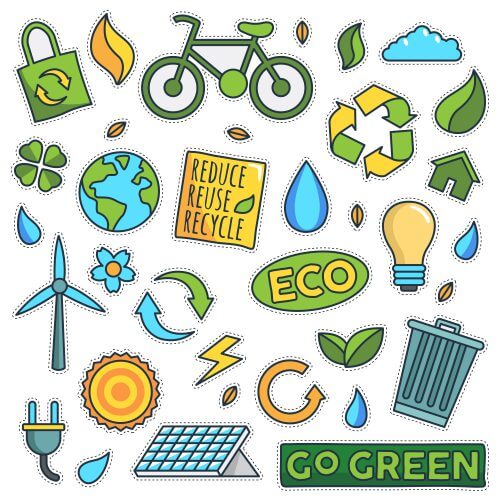A few days ago the frenzied shopping spree that is accelerated by the media began. For a month, companies offer discounts on products and the crowd of consumers rushes to the stores and the websites of the chain and buys everything that comes to hand. After the fact, it will turn out that most of the purchased products were produced in garbage dumps

A few days ago the frenzied shopping spree that is accelerated by the media began. For a month, companies offer discounts on products and the crowd of consumers rushes to the stores and the websites of the chain and buys everything that comes to hand. After the fact, it will turn out that most of the purchased products were produced in garbage dumps.
On Chinese Singles' Day, the threshold of thirty billion dollars was crossed, with a significant percentage of shopping including clothing and fashion items. This fact pushed me to check and research even more. It turns out that fashion revolves around the latest trend and what drives the fashion industry is the need to influence the way consumers consume products without any consideration of the need for the products and even more so without considering the need for the natural environment to continue to survive.
the environmental cost
The fashion industry produces about 20% of all wastewater in the world and contributes to about 10% of all carbon dioxide emissions in the world. Fabric production and dyeing is the second largest water polluter. 10,000 liters of water are needed to produce a pair of jeans. Every second, the amount of fabric in the contents of a garbage truck is thrown into the trash or burned in the world. If nothing changes, by 2050 the fashion industry will use a quarter of the global carbon budget. Washing clothes releases about half a million tons of microfibers into the seas and oceans every year.
The human cost
The payment to the textile industry workers is one of the lowest in the world and they are forced to work long hours under substandard conditions. However, following the demands of high-profile celebrities such as the new member of the British royal family, there is a new direction, no longer the buy-wear-throw approach.
Many of the fashion retailers are turning in a green direction and presenting an initiative for sustainability by focusing on reducing the damage to the environment. Despite this, there is a fundamental problem in an industry where income is based on the sale of more and more products (this is the case in most industries that provide consumer goods), which requires merchants to offer consumers new collections again and again, as it turns out that consumers quickly become addicted to the shopping spree and innovations.
That is why there is a need for the initiative of manufacturers who will develop more sustainable products and approaches, such as: painting without water, using leftovers as raw material and developing ways and innovations that will apply the green direction.
This coming March, a UN environmental convention is planned under the slogan: "Innovative solutions to environmental challenges, sustainable production and consumption". A slogan that should resonate among fashion manufacturers, since one of the goals of the conference (UN Alliance on Sustainable Fashion) will be to convince private manufacturers, governments and organizations to press and act to reduce the negative impact of the fashion industry, and implement sustainable development.
The various UN agencies are working to make the fashion industry sustainable. The United Nations Food and Agriculture Organization working to protect natural areas, the Ethical Fashion Initiative established by the International Trade Organization, works together with the United Nations to foster green fashion enterprises. This is how a Spanish manufacturer (Ecoalf) makes shoes from seaweed. In Amsterdam, the company GumDrop makes shoes from resin collected from trees. In California, clothes are made from fleece by recycling polyester bottles. Another company (Patagonia) encourages consumers to repair and recycle old clothes. A company from Cambodia (Tonlé) collects surplus production and old clothes for paper production. In the Netherlands, a company (Wintervacht) produces clothes from blankets and curtains purchased from second-hand stores, so more and more companies are switching to sustainable production.
There are those who will argue that the recycling process consumes a lot of energy and does not provide an answer to the culture of throwing clothes in the trash. It turns out that a garment worn for 15 years wears out by about 36%, that's why some people offer a rental market for clothes. One of the pioneers in renting is a Dutch company (Mud Jeans) that rents organically produced clothes and allows the return and exchange of the clothes.
The rental fashion may be successful among the wealthy users who do not want to wear the same item more than once, but among ordinary consumers there is no tendency to engage in renting or exchanging clothes, perhaps because of the need for a wide variety of clothes.
There are those who simplify the issue to the saying that less is more, in order to avoid environmental and financial damage as long as it is possible to properly use the clothes for a long time.
After all, the right solution is to leave the consumer culture. Education and action for a situation where people will buy what they need and not what is advertised. When public figures and actors, stars, presenters and announcers proudly talk about the size of their wardrobes, it is clear that this is a display of insensitivity to the environment and imperviousness to the world of nature and the environment or ignorance.
For as long as there is constant pressure from the media, advertisers, manufacturers and merchants, it will continue to influence consumers to overconsume.
More on the subject on the science website: 18
